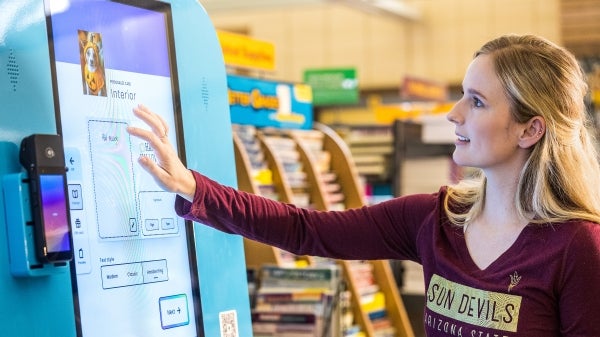People aren’t just feeling pain at the pump these days — they’re feeling it all over. From gas to groceries, from cars to cough drops, consumers are paying more for almost everything and getting less in return.
With inflation at a 40-year high, the cost of consumer goods and services are up almost 7% from the previous year.
The pandemic is playing a big part — from higher materials prices and workforce shortages to longer wait times and supply chain issues. These elements combine to eat into everyone’s pocketbooks, and low-income families feel it especially acutely.
ASU News reached out to Dennis Hoffman, professor of economics and director of the L. William Seidman Research Institute at Arizona State University's W. P. Carey School of Business, to discuss how inflation has changed all our lives and when we might expect some relief.
Dennis Hoffman
Question: What part has the pandemic played in our current situation?
Answer: In a nutshell, inflation results from too much money chasing too few goods. Part of the problem stems from the fact that the United States — and the world — had essentially zero inflation for over a decade. The Federal Reserve attempted to stimulate the economy with an expansionary monetary policy that seemingly was ineffective at moving inflation up to a healthy/moderate 2% level. Then COVID-19 hit. Now it is imperative that the Fed reverses course and restricts the flow of money and credit. The solution: We need less money chasing a few more goods.
We added massive fiscal stimulus at a time when households developed a rabid appetite for consumer goods and away from services. Because of the shutdowns and problems with international relations with China, suppliers have been unable to meet the ravenous demand. Prices had to rise to allocate the limited supply. This is very similar to what happened in the late 1940s when it took time to convert from wartime to peacetime production. Today, it’s simply taking time to resupply post-pandemic. And the dramatic shift from demand for services to consumption of goods has been a big contributor.
Q: I’ve read some reports where our current inflation is costing households an extra $5,000. Many households don’t have an extra $5,000, so how can they mitigate this for now?
A: This is based on averages. It has also hit households unevenly. If I am a renter in need of a new/used car and living paycheck to paycheck, I have been hit hard. If my cars are new and paid for, I own a home and my job is stable, I am essentially fine. Averages don’t work well here. Cases do.
Q: Two proposed ideas are that the Federal Reserve would raise the cost of borrowing to slow down demand and the IRS would issue larger tax refunds to give families relief. Do you see these adjustments as meaningful or effective?
A: The former is traditional and is taking place. The latter will likely just fuel the fire and is unadvisable. While well intended, trying to solve this problem by providing more spending power will just exacerbate it. What we really need is to ramp up production and distribution and clear any bottlenecks in supply chains. Adding to supply — not fueling more demand — is the answer.
Q: How will this current period of inflation impact those who are considering retirement or retirees and their current portfolios?
A: Inflation and the Federal Reserve’s response to it will add headwinds to equity prices. But nominal interest rates should rise, which will give savers an alternative to stocks. Hopefully current and recent retirees have been selling stocks over the past few years and parking cash in a rainy-day fund.
Q: How long will this inflationary period last? Opinions among experts seem to vary.
A: We’re likely to see moderation by the end of 2022 unless COVID-19 surges, supply chains remain clogged, semiconductor shortages persist or the Middle East explodes and OPEC reduces the supply of oil. For perspective, in the 1970s, oil prices increased tenfold over the entire decade. At present, we don’t have any parallel long-term inflation pressure unless the Federal Reserve refuses to do its job.
Top photo illustration by iStock
More Business and entrepreneurship

Thunderbird at ASU, W. P. Carey School team up on concurrent master's degrees
Students are now able to take advantage of two world-class schools at Arizona State University, at the same time. The Thunderbird School of Global Management and W. P. Carey School of Business…

ASU alum's personalized greeting card kiosk debuts on Tempe campus
Everyone knows how disheartening it is to dash into a store to grab a last-minute holiday card and find the selection picked over and in disarray.An Arizona State University alumna has created a…

Celebrating industry giants and distinguished alumni
Four outstanding alumni and two industry leaders will be honored at the School of Sustainable Engineering and the Built Environment’s Hall of Fame and Academy of Distinguished Alumni event, scheduled…

